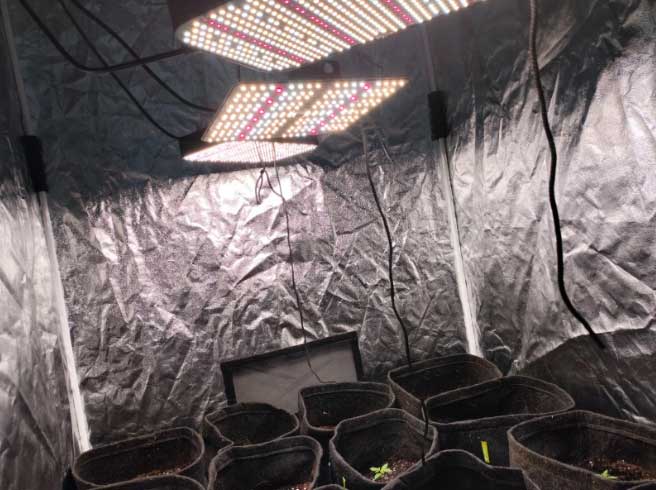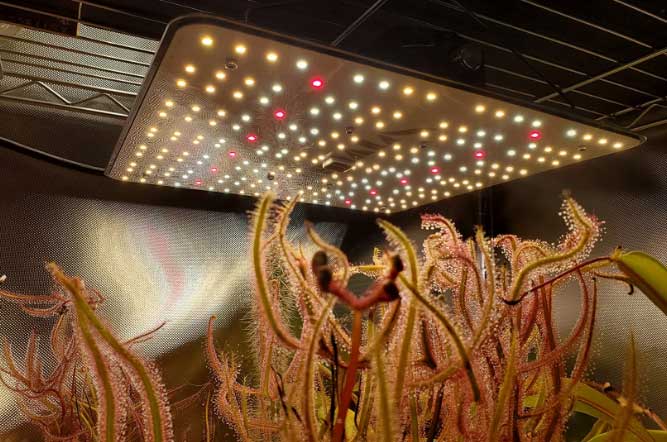Comparing LED Grow Lights: Spectrum, Intensity, and Efficiency
Looking to optimize your indoor garden? Compare LED grow lights for the best results. Discover the importance of spectrum, evaluating intensity levels, and energy efficiency.
With so many factors to consider, finding the perfect light for your plants can be a breeze. Make the best choice for your garden and watch your plants thrive.
Understanding the Importance of Spectrum
Understanding the importance of spectrum is crucial when evaluating LED grow lights for optimal plant growth.
As a gardener who desires belonging to a community of successful plant growers, you want to ensure that your plants receive the right wavelengths of light.
Spectrum refers to the range of colors emitted by the LED grow lights, which directly affects photosynthesis and plant development. Different plant species have specific light requirements at different stages of growth.
By choosing LED grow lights with a customizable spectrum, you can tailor the light output to match your plants’ needs, promoting healthy growth and higher yields.
In addition, understanding the importance of spectrum allows you to select the right LED grow lights that produce the necessary wavelengths to stimulate specific plant processes, such as flowering or fruiting.
Evaluating Intensity Levels for Optimal Plant Growth
To ensure optimal plant growth, you need to assess the intensity levels of LED grow lights by using a reliable quantifier determiner. Intensity refers to the amount of light energy emitted by the grow lights and is crucial for providing the right conditions for photosynthesis.
When evaluating intensity levels, consider the specific needs of your plants as different species have varying requirements. A useful tool for measuring intensity is a quantum meter, which quantifies the amount of light reaching the plants.
By using a quantum meter, you can accurately determine if the intensity levels provided by the LED grow lights are suitable for your plants’ growth. To visualize this concept, refer to the table below which compares the intensity levels required for different types of plants:
| Plant Type | Low Intensity (µmol/m²/s) | Medium Intensity (µmol/m²/s) | High Intensity (µmol/m²/s) |
|---|---|---|---|
| Leafy Greens | 100-200 | 200-400 | 400+ |
| Fruiting Plants | 200-400 | 400-600 | 600+ |
| Flowering Plants | 400-600 | 600-800 | 800+ |
| Succulents | 100-200 | 200-400 | 400+ |
Comparing Energy Efficiency of LED Grow Lights
When comparing LED grow lights, it’s important to assess their energy efficiency. You want a light that not only provides the necessary spectrum and intensity for optimal plant growth, but also does so in a way that’s cost-effective and environmentally friendly.
LED grow lights are known for their energy efficiency compared to traditional lighting sources like fluorescent or HID lights. LEDs use less energy to produce the same amount of light, resulting in lower electricity bills and reduced carbon footprint.
When choosing an LED grow light, look for models that have high energy efficiency ratings, such as those that are ENERGY STAR certified. These lights won’t only save you money in the long run, but also contribute to a sustainable and eco-friendly indoor gardening experience.
Factors to Consider for Overall Performance
To ensure optimal plant growth, you need to consider several factors for overall performance when choosing an LED grow light. These factors include the light’s coverage area, power consumption, and heat dissipation capabilities.
A larger coverage area means that the light can illuminate more plants, ensuring that all of them receive adequate light for photosynthesis. Power consumption is an important consideration as it affects both your energy bills and the environmental impact of your growing operation. Choosing a grow light with efficient power usage can help save costs in the long run. Lastly, heat dissipation is crucial to prevent overheating and damage to your plants.
Consider these factors when selecting an LED grow light to ensure that you provide the best environment for your plants to thrive.
| Factor | Importance | Considerations |
|---|---|---|
| Coverage Area | High | Larger area allows for more plants to be illuminated. |
| Power Consumption | Medium | Efficient power usage saves costs and reduces environmental impact. |
| Heat Dissipation | High | Proper heat dissipation prevents damage to plants. |
Making the Best Choice for Your Indoor Garden
Choose wisely to ensure the best LED grow light for your indoor garden. When making your decision, consider the following factors:
- Light spectrum: Look for a grow light that provides a full spectrum of light, including both blue and red wavelengths. This will promote healthy plant growth and maximize your yield.
- Light intensity: Opt for a grow light that offers adjustable intensity levels. This will allow you to customize the light output based on the specific needs of your plants at different stages of growth.
- Energy efficiency: Opt for a grow light that’s energy efficient, as this will help you save on electricity costs in the long run. Look for lights with high PAR (photosynthetically active radiation) output and low power consumption.
- Durability and warranty: Choose a grow light from a reputable brand that offers a solid warranty. This will give you peace of mind knowing that your investment is protected and that you can rely on the product for years to come.
Consider these factors carefully, and you’ll be well on your way to selecting the perfect LED grow light for your indoor garden. Happy growing!
Conclusion
In conclusion, when choosing LED grow lights for your indoor garden, it’s important to consider the spectrum, intensity, and efficiency.
The spectrum of light emitted by the grow lights plays a crucial role in plant growth and development. Evaluating the intensity levels ensures optimal growth, while energy efficiency helps reduce costs.
Overall, considering these factors will help you make the best choice for your indoor garden and ensure successful plant cultivation.








